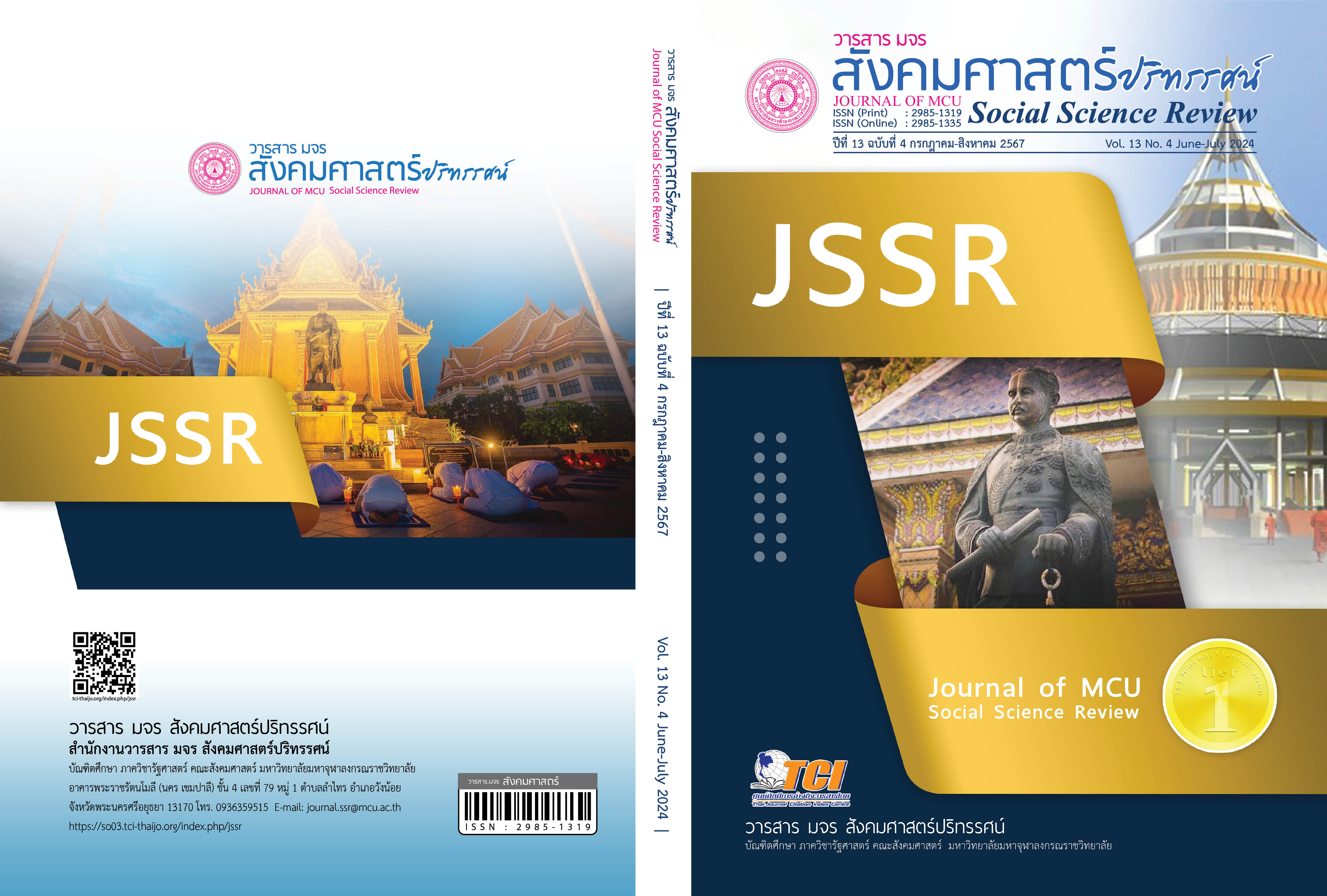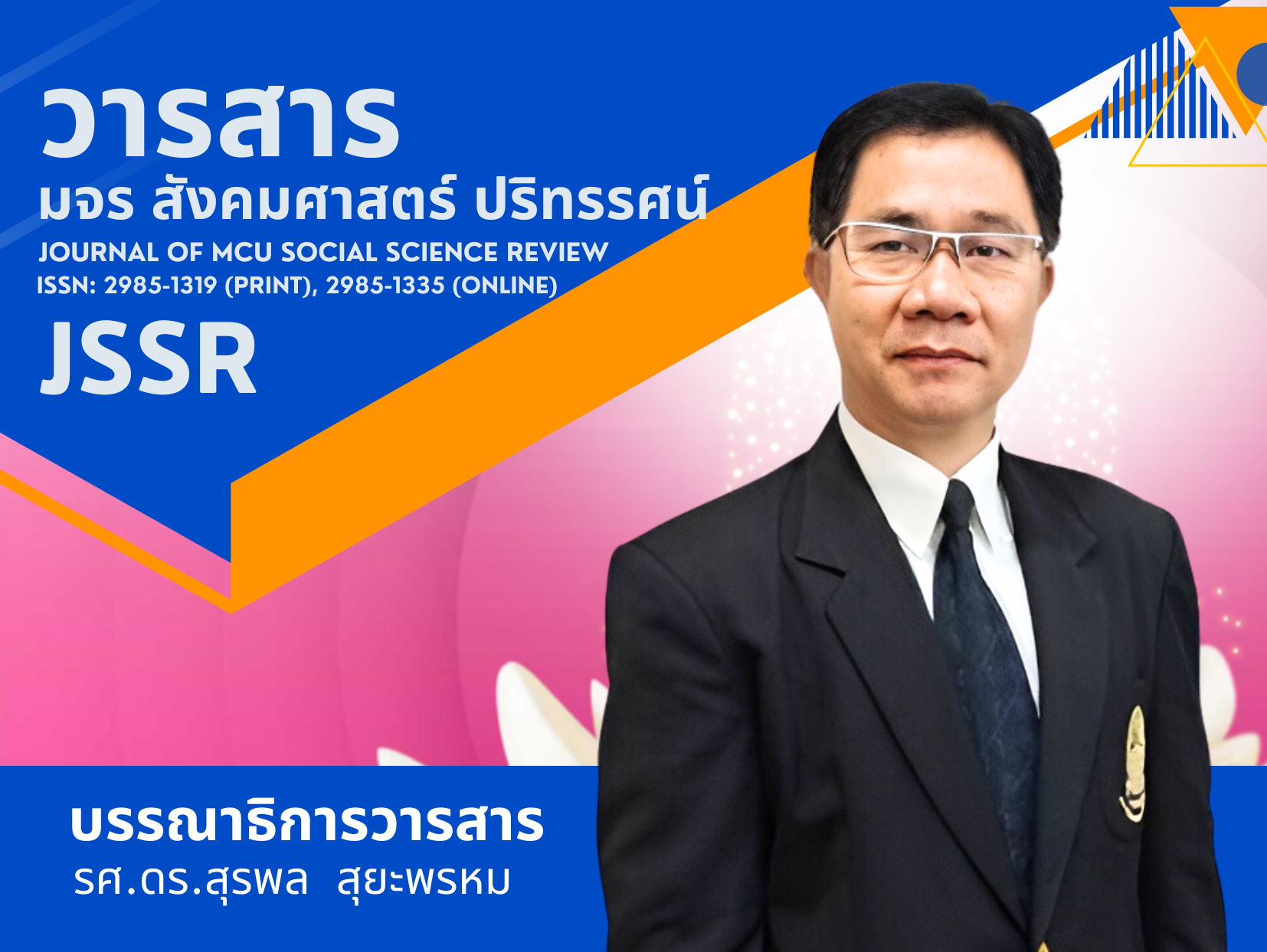DEVELOPMENT OF THE BODY OF KNOWLEDGE IN BUDDHIST LEARNING INNOVATION AREA
Keywords:
Knowledge Development, Innovative Learning Area, Buddhist LearningAbstract
Objectives of this research: were: 1. To study the body of knowledge in Buddhist learning innovation area, 2. To study a set of activities for the body of knowledge in Buddhist learning innovation area, and 3. To evaluate the set of activities for the body of knowledge in Buddhist learning innovation area. The research used multi-sequenced design divided into 3 phases. In phase 1, the qualitative data were collected from 42 key-informants and analyzed by inductive method. In phase 2, the qualitative data were obtained from 10 key-informants. And in phase 3, the quantitative data were collected from 50 samples.
The study results showed that: 1. The body of knowledge in Buddhist learning innovation area consists of sufficiency activity in using the university area integrated with the principles of Tisikkha. The area for transfer the body of knowledge in the Buddhist way is Faculty of Education in Mahachulalongkornrajavidyalaya University.
2. The set of activities for the body of knowledge in Buddhist learning innovation area consists of 4 activities; 1. Sufficiency Buddhist Activity for creating good value of water resource and sustainability of food production, 2. Buddhist Learning Activity based on mindfulness and wisdom in solving problems, 3. Walking Activity to merit, and 4. Activity for transferring the body of Buddhist knowledge. 3. The evaluation results of the set of activities for the body of knowledge in Buddhist learning innovation area were at a high level overall. In aspects, the highest level was on feasibility, followed by application and utility respectively.
References
กิดานันท์ มลิทอง. (2548). เทคโนโลยีการศึกษาและนวัตกรรม. กรุงเทพฯ อรุณการพิมพ์.
พระครูขันติวโรภาส (ขาว ขนฺติโก). (2559). รูปแบบการพัฒนาวัดในกรุงเทพมหานครให้เป็นแหล่งเรียนรู้ด้านศิลปวัฒนธรรม. มหาสารคาม: มหาวิทยาลัยมหาสารคาม.
พระเทพโสภณ (ประยูร ธมฺมจิตฺโต). (2546). ทิศทางการศึกษาไทย. กรุงเทพฯ: โรงพิมพ์มหาจุฬาลงกรณราชวิทยาลัย.
พระพรหมคุณาภรณ์ (ป.อ. ปยุตฺโต). (2547). การศึกษาเริ่มต้นเมื่อคนกินอยู่เป็น. กรุงเทพฯ: อุษาการพิมพ์.
สุทธิพงศ์ บุญผดุง.(2558). การพัฒนาแหล่งเรียนรู้ในโรงเรียน สังกัดสำนักงานเขตพื้นที่การศึกษาประถมศึกษานครนายก. กรุงเทพฯ: มหาวิทยาลัยราชภัฏสวนสุนันทา.
เสาวภา ไพทยวัฒน์ และคณะ. (2553). การเปลี่ยนแปลงในชีวิตของสังคมเมืองกับการสร้างรูปแบบศรัทธาการมีส่วนร่วมในการทำนุบำรุงพระพุทธศาสนาและการอนุรักษ์วัฒนธรรมไทย : กรณีศึกษา วัดเบญจมบพิตรดุสิตวนาราม (รายงานการวิจัย). กรุงเทพฯ: มหาวิทยาลัยราชภัฏสวนสุนันทา.
อัจฉรา จันทร์ฉาย. (2553). นวัตกรรม: ความหมาย ประเภท และความสำคัญต่อการเป็นผู้ประกอบการ. วารสารบริหารธุรกิจ, 33(128), 57-58.
Education Sandbox. (2022). Educational innovation area. Retrieved October 25, 2022, from https://www.parliament. go.th
Downloads
Published
How to Cite
Issue
Section
License
Copyright (c) 2024 Journal of MCU Social Science Review

This work is licensed under a Creative Commons Attribution-NonCommercial-NoDerivatives 4.0 International License.
In order to conform the copyright law, all article authors must sign the consignment agreement to transfer the copyright to the Journal including the finally revised original articles. Besides, the article authors must declare that the articles will be printed in only the Journal of MCU Journal of Social Sciences. If there are pictures, tables or contents that were printed before, the article authors must receive permission from the authors in writing and show the evidence to the editor before the article is printed. If it does not conform to the set criteria, the editor will remove the article from the Journal without any exceptions.




